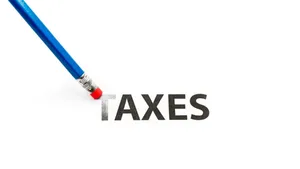Tax season is stressful enough. Add cryptocurrency to the mix, and it’s easy to feel overwhelmed. You’ve probably heard stories about the IRS cracking down on crypto, and the last thing you want is to get something wrong.
Here’s the good news: As a Coinbase user, you already have a head start. Coinbase provides tools and reports that significantly simplify this process.
This guide will not provide tax advice. Instead, it will walk you through the process of getting your information, understanding what matters, and reporting it correctly.
Important Disclaimer: We are not tax professionals. This guide is for informational purposes only. You should always consult with a qualified tax advisor or CPA regarding your specific financial situation.
Step 1: Understand What a "Taxable Event" Is
The first, and most important, concept to understand is the "taxable event." The IRS doesn't tax you just for owning crypto. They tax you on the gains you make when you dispose of it.
For most beginners, here are the most common taxable events:
- Selling Crypto: Selling your Bitcoin for US Dollars (USD).
- Trading Crypto: Trading your Ethereum for a different crypto, like Solana. (This is the one most people miss!)
- Paying for Goods/Services: Using your crypto to buy a coffee or a computer.
- Earning Rewards: Receiving staking rewards or interest from programs like Coinbase Earn (this is treated as income).
What is NOT a taxable event?
- Buying crypto with USD and just holding it (HODLing).
- Moving crypto from your Coinbase wallet to your own private hardware wallet.
- Donating crypto to a qualified charity.
Step 2: Find Your Tax Information in Coinbase
This is where being a Coinbase user pays off. Coinbase centralizes all your transaction data in one place.
Log in to your Coinbase account, go to your profile, and find the "Taxes" section.
Here, you will find two crucial things:
1. Your Gain/Loss Report (Transaction History) This is the most important document for 99% of users. It is a detailed log of every buy, sell, and trade you made. It shows:
- Cost Basis: What you paid for the crypto.
- Proceeds: What you sold it for.
- Gain or Loss: The difference, which is what you're taxed on.
You will use this report to fill out your tax forms.
2. Form 1099-MISC (for some users) You will only receive a 1099-MISC if you earned $600 or more in rewards or fees from staking or Coinbase Earn. If you just bought and sold crypto, you probably won't get this form, and that's completely normal.
Step 3: Choose Your Reporting Method (The Easy Way)
You have your Gain/Loss report. Now what? You have three main paths. For a beginner, one path is clearly the best.
Path 1 (Highly Recommended): Use Crypto Tax Software
This is the easiest, safest, and most accurate method. Coinbase has built-in partnerships with major tax software to make this almost automatic.
- How it works: In the "Taxes" section of Coinbase, you will see options to integrate with software like TurboTax, Koinly, or CoinTracker.
- What it does: You securely connect your Coinbase account via an API. The software automatically imports your entire transaction history.
- The Magic: The software instantly calculates your total capital gains or losses and generates the exact IRS form you need, which is Form 8949.
Using this integration saves you from manually entering hundreds of trades into a spreadsheet. It’s the single best way to ensure accuracy.
Path 2: Do It Manually If you only made one or two trades all year (e.g., "I bought $100 of Bitcoin and sold it for $150"), you could calculate your $50 gain yourself and file Form 8949 by hand. For anyone with more than 3 trades, this becomes a nightmare and is not recommended.
Path 3: Hire a Crypto Accountant If you have a very complex situation (DeFi, NFTs, margin trading), it's wise to hire a CPA who specializes in cryptocurrency. For your first time, you can simply download your Coinbase reports and hand them over.
Step 4: The Final Filing
No matter which path you choose, the end goal is the same. Your crypto gains or losses are reported on Form 8949 (Sales and Other Dispositions of Capital Assets).
The total gain or loss from Form 8949 is then carried over to Schedule D, which then flows onto your main Form 1040 tax return.
If you use a service like TurboTax, this all happens in the background. You'll just see a few questions like "Did you trade crypto?" and "Connect your Coinbase account." The software will handle the rest.
Your Simple 4-Step Checklist
Feeling overwhelmed? Just follow this.
- Don't panic. This is new for everyone, and you're learning the process.
- Log in to Coinbase and navigate to the "Taxes" section.
- Choose a software partner like TurboTax or CoinTracker and securely connect your account. Let it import your data.
- Follow the software's prompts. It will generate the necessary forms and add them to your tax return.
That's it. By leveraging Coinbase's powerful reporting tools, you can turn a confusing tax problem into a simple, manageable task.






